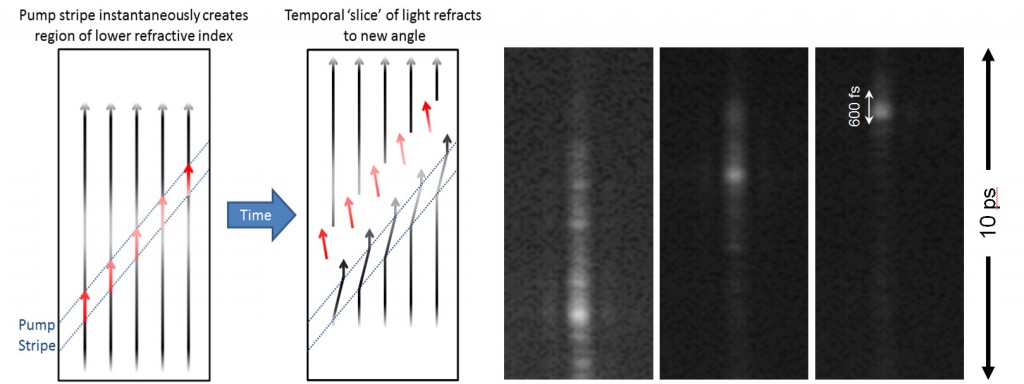John Heebner (15-ERD-055)
Abstract
There have been numerous research and development efforts to build advanced optical laser-based technologies capable of achieving sub-picosecond resolution with recording lengths on the nanosecond scale to record the dynamics of materials under extreme conditions of temperature and pressure. However, these complex systems have not found widespread use because of challenges associated with their manufacture, portability, or spectral versatility. Our goal is to develop and demonstrate an advanced recording capability that bridges the picosecond-to-nanosecond time gap in a simple, portable geometry that is spectrally versatile. Ultrafast, single-shot recording technologies are an essential capability for many experimental programs at LLNL. Unfortunately, the temporal resolution of these technologies has been outpaced by the timescales associated with experimental signatures. We are developing a recording technique using a waveguide chip, a pump laser to gate the incoming signal as a function of space, and an ordinary camera to image the output of the waveguide. This arrangement effectively maps the temporal content of the signal across a lateral dimension of the camera for recording.
If successful, the diagnostic we develop will bridge a time gap that has long existed between commercially available oscilloscopes possessing long record lengths and ultrafast optical techniques with sub-picosecond resolution. We expect to deliver a working demonstration of a single-shot recording technique with 1-ps resolution across 1 ns of record length with wide spectral versatility. The diagnostic will be portable and will be tested with direct measurement of an LLNL Advanced Radiographic Capability pulse on a single shot for the first time. In addition to benefiting the Advanced Radiographic Capability, this technology will also be of interest to government contractors and commercial suppliers of high-speed instrumentation. Finally, the work will generate peer-reviewed publications as well as new intellectual property.
Mission Relevance
Our proposed diagnostic system to directly measure a laser pulse for a single shot on the Advanced Radiographic Capability aligns with the LLNL core competency in lasers and optical science and technology in the area of ultrafast diagnostics. Additionally, this capability supports the Laboratory's core competency in high-energy-density science, which relies on advanced fusion-class lasers to further its research.FY15 Accomplishments and Results
In FY15 we (1) evaluated three variants of a novel optical pump-induced sampling architecture, including a streak deflector, interferometric switch, and dark-field switch; (2) selected the dark-field switch because of its potential for a long record length, better background levels, and limits of detection; (3) assembled a test bed from a tabletop titanium–sapphire laser that generated pump and test signals—existing waveguide chips were repurposed from an earlier project, so no fabrication was required; and (4) demonstrated the proof-of-concept for short record lengths, and determined the background light remaining in this setup was mitigated by deconvolution of the scattering response of the chip and polishing of the edge facets. A compact fiber-laser pump source may be developed to replace the tabletop laser to enable future portability.






